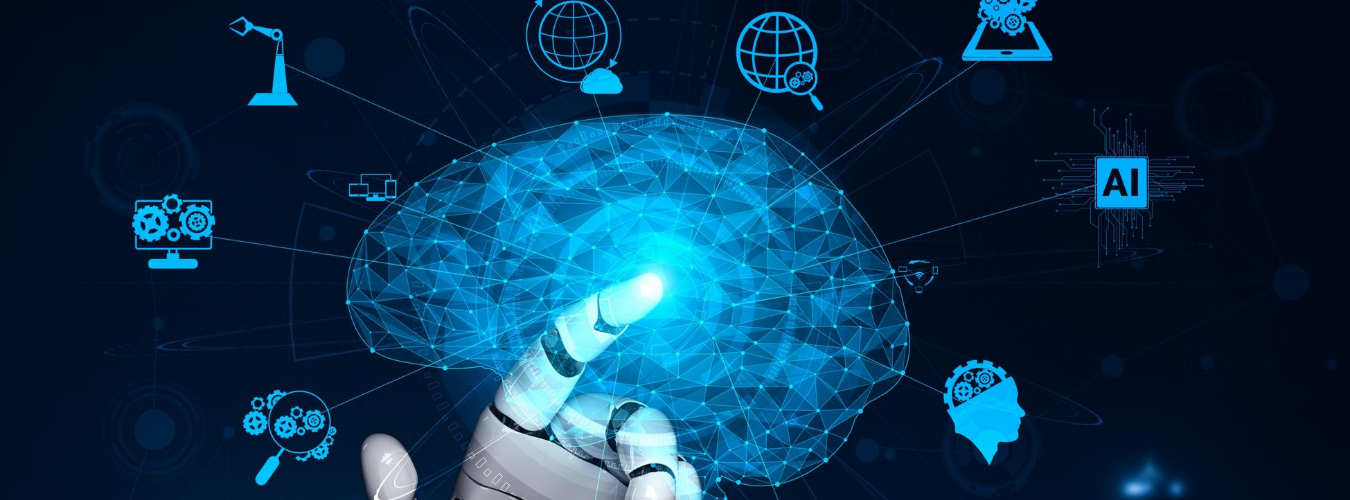Undoubtedly, people across the world are adopting latest technologies more than ever. 52% of consumers agree to the fact that technology is ingrained into majority of their everyday tasks and plays a significant role in their lives, according to the stats derived from the technology vision consumer survey. For businesses, the road to digital transformation gets reshaped with the advent of newer technologies. Putting efforts to include the right ‘trends’ in the corporate strategy & benefiting from them is something every business is aiming for.
Latest technology trends 2022
In this digital era, the advancement of a business depends upon the successful adoption of top emerging technologies. Here are some impressive technology trends that are set to disrupt the world:
1. Machines are getting smarter
The increasing capacity of machines to understand and act wisely will completely change our reality. It is likewise the main impetus behind a large number of different other trends as well. ML & AI based analysis is one of the hot technology trends of 2022. With this technique, businesses can make crucial data-driven decisions that are based on analysis of structured and unstructured data over a period of time. Analysis boosted with AI & ML results in highly accurate forecasts and provides valuable insights about future trends as well. According to Forrester, companies that are harnessing the power of artificial intelligence (AI) and machine learning (ML) will boost their profits by $1.2 trillion annually.
2. Future will be driven by smart devices
A vision of a “connected” future with smart devices, cars, homes and organizations – IoT (Internet of Things) hasn’t dropped from the trends list yet. Enterprises are boosting their efforts to create an ultimate connected experience with convenient smart living. With rising consumer expectations, the technology innovators are finding newer ways to satisfy the increasing demand. According to Forbes, the IoT market is set to reach $267 billion by 2022.
3. Intelligent electronics and wearables
The electronics tech segment is reaching its zenith having started initially with fitness trackers, it is now exploding into a separate wearables technology industry. With an aim to enhance human performance and motivate us to live a healthier, wholesome and safe life, people across the world are increasingly becoming health conscious and adopting intelligent wearables that help them achieve their fitness goals.
Wearables are nothing but devices that one can wear all day long, and are connected to other devices such as laptops and smartphones. A range of fitness trackers, smartwatches, safety wearables etc are available these days. The market size valuation of global wearable technology in 2019 was $32.63 billion and is expected to expand at a CAGR of 15.9% during the period 2020-27, according to Grand View Research.
4. Natural Language Processing
The branch of AI – NLP (Natural Language Processing) determines the way of computer programming that understands processes and has language recognition capabilities like humans. With NLP, businesses are able to understand their customers better as they can now understand various languages as it gets delivered almost in real time. The communication has become faster – all due to rise of natural language processing technology. Advanced NLP tools such as smart assistants and chatbots are being used by businesses all over the world to understand market shifts and consumer sentiments.
5. The rise of “Alternative Data” in the financial sector
In order to gain a competitive edge, hedge fund managers and investors are discovering newer ways to enhance their investment decisions. Alternative data from social media posts, job listings, flight routes of corporate airplanes, satellite images, geolocation data from smartphones to credit card transactions is being utilized to create alpha. Experts believe that the alternative data market is still in its infancy phase, but it is getting bigger every year. According to MarketWatch, for buy-side firms, total alternative data spend was $1.1 billion in 2019.
6. Rollout of 5G
The rollout of 5G will dramatically change our lives, helping us realize the hidden possibilities of a connected world. With 20x more speed than 4G, the 5G technology is ubiquitous and has low latency. Also, the consumption of power by the 5G antennas is less, making it suitable for small battery operated IoT devices. The technology will be utilized in smart machines, smart cities, driverless cars, telemedicine and media consumption, once it gets deployed in the United States. 5G has been successfully launched in countries like the UK, South Korea and China.
7. XR industry moving into industrial applications
The two prominent sectors where people are most likely to experience AR and VR has been media & entertainment and online gaming. But that’s going to change now. According to a research by VR Intelligence, 65% of the surveyed augmented reality companies agreed to be working on industrial applications. On the other hand, only 37% of them said they were working on softwares and products for consumers.
With the XR technology being adopted in the healthcare industry gradually, the applications of VR can be seen in therapy to treat anxiety, phobias and autism. It is also being used by surgeons in theatre and training. Also, to guide the nurses find the correct veins. By 2025, the global XR market in healthcare industry is expected to reach $10.82 billion. With 5G on the roll, it will act as a catalyst to strengthen the presence of AR & VR technology in our lives.
8. RPA – Robotic Process Automation
Using software for automating complex business processes such as data analysis, application interpretation, processing transactions, or simply automating email responses is RPA. It automates the recurring tasks done by humans. Organizations across the world are using RPA to minimize human error & reduce staffing costs. According to Gartner, the RPA market is expected to reach $1billion by 2022. Enterprises are boosting up their automation efforts by combining RPA with advanced technologies such as Machine Learning (ML), Natural Language Processing (NLP) and speech recognition in order to automate high-order tasks that required humans to perceive and judge the situation or task.
9. Real-time prescriptive analytics
Helping decision makers make crucial decisions – Prescriptive analytics, a form of advanced data analytics, provides future insights to businesses. Organizations are harnessing the power of actionable insights that help them confidently & fearlessly make business decisions for the future as soon as data is gathered. The capability of real-time prescriptive analytics is being driven by simultaneous growth of real-time big data platforms and advanced deep learning platforms.
10. Privacy Enhancing Technologies (PETs)
In order to achieve compliance with the rules governing data protection, privacy enhancing technologies (PETs) – the technologies involved in protecting personal data be it citizen, customers or employee data. The technologies aim to minimize personal data use, maximize data security and empowerment of individuals. Some examples of PETs include: pseudonymization, obfuscation and differential privacy.









